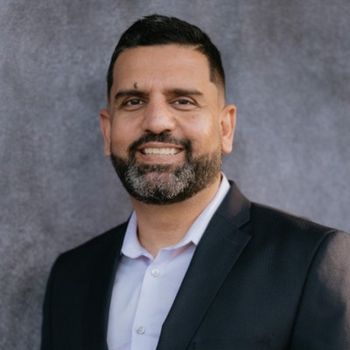
Facing the contemporary challenges in health care
How a community hospital in Northeast Ohio formed a heart and vascular hospital to achieve quality and growth
Aultman Hospital, located in Canton, Ohio, approximately an hour south of Cleveland, has been serving the health care needs of Stark and surrounding counties since its founding in 1892. Aultman has remained an independent health care delivery system throughout its 125-plus-year history.
In 2020, in response to the increasingly complex landscape of cardiovascular care and in recognition of its strong cardiovascular program, Aultman Hospital and its parent organization, Aultman Health System, partnered with its employed physician cardiology group to form the Aultman Deuble Heart & Vascular Hospital (ADHVH). The objective was to create an integrated team of all contributors of health care delivery, especially physicians, nurses, technologists and administrators dedicated to delivering high-quality, efficient, collaborative and patient-centered cardiovascular care.
To guide its efforts, the organization defined a clear set of strategic goals (Figure 1) that would serve as a road map to measure success and ensure alignment in mission, values and execution.
Approach: Four pillars of success
ADHVH’s creation and sustainability have been centered around four key strategic pillars:
- Strategic structure and organizational philosophy
- Delivering high-quality cardiovascular care
- Access-centered expansion and tactical growth
- Operational efficiency initiatives
Strategic structure and organizational philosophy
To ensure focused leadership and aligned execution, ADHVH appointed physician leaders and nonphysician directors across all key service areas. From the outset, the initiative emphasized the following:
- Collaborative leadership across clinical and administrative lines
- A can-do culture that embraced innovation and flexibility
- Performance-based incentives for high achievers
- Prioritization of safety and well-being of both patients and staff (Figure 2)
- A commitment to continuous learning and development via a robust education program and talent pipeline that built skilled clinicians from within
This leadership model fostered a culture where team members were encouraged to think beyond traditional roles, challenge the status quo and pursue operational excellence.
Delivering high-quality cardiovascular care
At the core of Aultman Deuble Heart & Vascular Hospital’s mission is a steadfast commitment to delivering high-quality, safe, effective and patient-centered cardiovascular care. This commitment is reflected in several key achievements:
- Significant reduction in readmissions: Heart failure readmission rates dropped from over 20% in 2019 to consistently below 17% following the implementation of ADHVH. Post-myocardial infarction (MI) readmissions also decreased from nearly 14% in 2019 to single digits and have remained stable since (Figures 3 and 4).
- National recognition for surgical excellence: The Cardiothoracic Surgery Program has maintained a prestigious Society of Thoracic Surgeons three-star rating, the highest distinction awarded for superior care quality and outcomes in coronary artery bypass graft surgery.
- Consistent reduction in average length of stay (ALOS): Focused efforts on improving hospital efficiencies, such as enhanced discharge planning, clear team accountability, streamlined processes to reduce bottlenecks and timely, appropriate diagnostic testing, have collectively contributed to a sustained year-over-year decrease in ALOS (Figure 5).
- Superior first medical contact (FMC)-to-device and door-to-balloon (D2B) times: The team has consistently achieved FMC-to-device times less than 55 minutes and D2B time of 39 minutes or less over the last several years, outperforming national benchmarks and contributing to better outcomes for patients with ST elevated MI.
Through this unwavering dedication to excellence, the ADHVH team worked to ensure that every patient received the right care, at the right time, to achieve the best possible outcomes.
Access-centered expansion and tactical growth
To improve access and support long-term growth, ADHVH implemented a dual approach focused on patient-centered outreach and service line development. Key access initiatives included the following:
- Establishing a network of strategically located satellite offices, staffed by traveling physicians and care teams
- Deploying a mobile cardiac care unit to reach rural and underserved areas without brick-and-mortar offices
- Expanding appointment availability, including guaranteed new patient slots within three business days for primary care referrals
- Prioritizing urgent cases for same-day scheduling and even a walk-in option
In parallel, ADHVH focused on building long-term capacity through strategic service line development and talent acquisition:
- Recruited specialists in interventional cardiology, electrophysiology, structural heart, cardiac surgery and heart failure
- Streamlined procedure scheduling and follow-up using digital communication platforms
- Maintained leadership continuity to support forward momentum
These efforts drove significant increases in outpatient volumes and procedures, reinforcing ADHVH’s mission to innovate beyond traditional care models (Figures 6, 7 and 8).
Operational efficiency initiatives
To reduce unnecessary hospital admissions and ensure timely intervention, ADHVH embedded a cardiologist within the emergency room during regular business hours. This innovation allowed for early cardiac evaluations, expedited discharges and scheduled next-day outpatient follow-ups.
Additional measures that enhanced operational efficiency included the following:
- A walk-in cardiology clinic
- An outpatient IV diuretic clinic
- A syncope evaluation clinic
- Routine cardiology rounding at Aultman’s skilled nursing and rehabilitation facility
These initiatives helped reduce readmission rates for congestive heart failure (CHF) and acute MI, alleviated pressure on inpatient nursing units and improved care transitions (Figures 4 and 5).
Ongoing nationwide challenges, but a culture of continuous improvement
Despite its progress, ADHVH continues to face challenges common across health care systems nationwide. The organization approaches these with a commitment to continuous improvement and collaborative problem-solving.
- Workforce shortages: Like many systems, ADHVH faces challenges with retention and recruitment. In response, leadership has worked creatively to manage increasing volumes while containing premium labor costs through cross-functional teamwork and flexible staffing strategies. The team continues to show a superior level of dedication and the ability to rise to the occasion when needed.
- Competitive market pressures: ADHVH operates side by side with a much larger, nationally recognized health care system. Despite this, ADHVH maintains market share through flexibility, innovation and team-driven culture.
- Rising costs of care: Facing escalating costs of labor and medical therapeutics, ADHVH has leaned into efficiency, resource stewardship and peer accountability to maintain fiscal responsibility without compromising care while maintaining the highest quality.
- Physician scheduling: Serving a wide geographic area across seven counties contributed significantly to ADHVH success but also introduced logistical complexities. Physician vacation, critical for long-term job satisfaction, often led to unpredictable scheduling, presenting additional coordination challenges.
Summary and conclusion
The ADHVH wanted to share its experience to inspire and inform peers facing similar challenges. While workforce shortages, rising costs of care and other adversities persist, ADHVH’s commitment to quality, innovation, collaboration and pursuit of expansion positions it well for sustainable growth. Through its strategic vision, the organization remains dedicated to delivering high-quality, patient-centered care to communities in the Northeast Ohio region.
Collaboration and acknowledgement
The dedicated leadership team at ADHVH played a pivotal role in the development of this article (Figure 9).
Special thanks for collaboration go to Sara Schaub, Jamie Stanos, Stacy Rippel, Kristen Fano, Stephanie Bonner, Lorrie Durkin, Ashley Everetts, Elisha Jett, Marla Metzger, Dana Ginther, Janelle Perger, Kimberly Lewis, Melissa Speck, Amanda Ghezzi, Zachary Dennison, Tameka King, Ryan Chizmadia, Jean Grillon, Olivia Barr, Kelly Witham, Donna Ledger, Dr. Prabhakaran Gopalakrishnan, Dr. Baldev Sekhon, Dr. Ryan Koene, Dr. Sharan Rufus Ponniah, Dr. Ramana Podugu, Dr. Mihail Paxos, Dr. John Paulowski and Dr. Ataul Qureshi, and Aultman Health System leaders, Robert Mullen, Ryan Jones and Robert Molnar.
Akbar Shah, M.D., (
Christina Smith, MBA, BSN, RN, (
Newsletter
Stay informed and empowered with Medical Economics enewsletter, delivering expert insights, financial strategies, practice management tips and technology trends — tailored for today’s physicians.


















